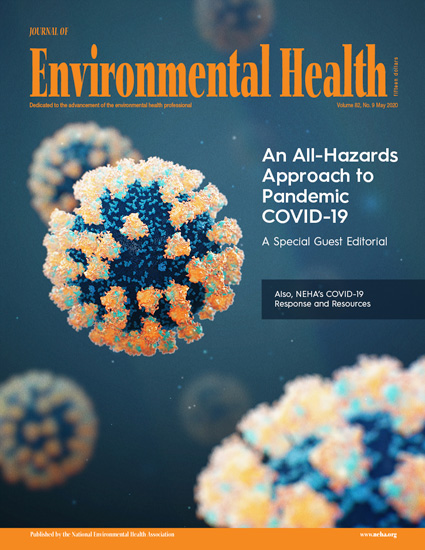长期暴露于交通噪声与糖尿病死亡率:一项全国队列研究和最新荟萃分析
IF 5.3
2区 环境科学与生态学
Q1 ENVIRONMENTAL SCIENCES
引用次数: 0
摘要
长期暴露于交通噪声与心血管代谢疾病有关,最近的证据还显示与糖尿病(DM)发病率有关。本研究旨在评估瑞士国家队列中交通噪声与糖尿病死亡率之间的关系。在 15 年的跟踪调查期间(2001-2015 年;414 万成年人),累计有超过 7.2 万名糖尿病患者死亡。考虑到搬迁历史,计算了居民点的特定噪声源。采用多暴露、时变考克斯回归法得出危险比(HR 和 95% 置信区间)。模型包括道路交通、铁路和飞机噪声、空气污染以及包括社会经济地位在内的个人和地区级协变量。分析包括暴露-反应模型、效应修正和机场周围的子集分析。主要研究结果与已发表的死亡率和发病率研究(分别和合并)进行了荟萃分析。道路交通、铁路和飞机噪声的 HR 分别为每 10 分贝昼夜水平(Lden)1.06(1.05,1.07)、1.02(1.01,1.03)和 1.01(0.99,1.02)(调整模型,包括 NO2)。样条曲线显示了道路交通噪声的阈值(约 46 分贝 Lden,远低于 53 分贝 Lden 的世卫组织指导水平),但没有显示铁路噪声的阈值。用 PM2.5 代替或将 1 型糖尿病的死亡人数包括在内几乎没有改变相关性。男性的心率高于女性,年轻人的心率高于老年人。仅关注1型糖尿病,就会发现其与道路交通噪声有独立的关联。只有道路交通噪声与死亡率(每 10 分贝 1.08 [0.99, 1.18],n = 4)相关的研究可以进行 Meta 分析,其点估计值与发病率(每 10 分贝 1.07 [1.05, 1.09],n = 10)大致相似。将发病率和死亡率研究结合起来表明,每个噪声源都存在正相关关系,其中道路交通噪声最强(分别为每 10 分贝 1.07 [1.05, 1.08]、1.02 [1.01, 1.03]和 1.02 [1.00, 1.03]),道路交通噪声[n = 14]、铁路噪声[n = 5]和飞机噪声[n = 5]。这项研究提供了交通噪声与糖尿病死亡率相关的新证据。随着越来越多的证据和巨大的疾病负担,糖尿病应被视为噪声与健康讨论中的一个重要结果。本文章由计算机程序翻译,如有差异,请以英文原文为准。
Long-term exposure to transportation noise and diabetes mellitus mortality: a national cohort study and updated meta-analysis
Long-term exposure to transportation noise is related to cardio-metabolic diseases, with more recent evidence also showing associations with diabetes mellitus (DM) incidence. This study aimed to evaluate the association between transportation noise and DM mortality within the Swiss National Cohort. During 15 years of follow-up (2001–2015; 4.14 million adults), over 72,000 DM deaths were accrued. Source-specific noise was calculated at residential locations, considering moving history. Multi-exposure, time-varying Cox regression was used to derive hazard ratios (HR, and 95%-confidence intervals). Models included road traffic, railway and aircraft noise, air pollution, and individual and area-level covariates including socio-economic position. Analyses included exposure-response modelling, effect modification, and a subset analysis around airports. The main findings were integrated into meta-analyses with published studies on mortality and incidence (separately and combined). HRs were 1.06 (1.05, 1.07), 1.02 (1.01, 1.03) and 1.01 (0.99, 1.02) per 10 dB day evening-night level (Lden) road traffic, railway and aircraft noise, respectively (adjusted model, including NO2). Splines suggested a threshold for road traffic noise (~ 46 dB Lden, well below the 53 dB Lden WHO guideline level), but not railway noise. Substituting for PM2.5, or including deaths with type 1 DM hardly changed the associations. HRs were higher for males compared to females, and in younger compared to older adults. Focusing only on type 1 DM showed an independent association with road traffic noise. Meta-analysis was only possible for road traffic noise in relation to mortality (1.08 [0.99, 1.18] per 10 dB, n = 4), with the point estimate broadly similar to that for incidence (1.07 [1.05, 1.09] per 10 dB, n = 10). Combining incidence and mortality studies indicated positive associations for each source, strongest for road traffic noise (1.07 [1.05, 1.08], 1.02 [1.01, 1.03], and 1.02 [1.00, 1.03] per 10 dB road traffic [n = 14], railway [n = 5] and aircraft noise [n = 5], respectively). This study provides new evidence that transportation noise is associated with diabetes mortality. With the growing evidence and large disease burden, DM should be viewed as an important outcome in the noise and health discussion.
求助全文
通过发布文献求助,成功后即可免费获取论文全文。
去求助
来源期刊

Environmental Health
环境科学-公共卫生、环境卫生与职业卫生
CiteScore
10.10
自引率
1.70%
发文量
115
审稿时长
3.0 months
期刊介绍:
Environmental Health publishes manuscripts on all aspects of environmental and occupational medicine and related studies in toxicology and epidemiology.
Environmental Health is aimed at scientists and practitioners in all areas of environmental science where human health and well-being are involved, either directly or indirectly. Environmental Health is a public health journal serving the public health community and scientists working on matters of public health interest and importance pertaining to the environment.
 求助内容:
求助内容: 应助结果提醒方式:
应助结果提醒方式:


